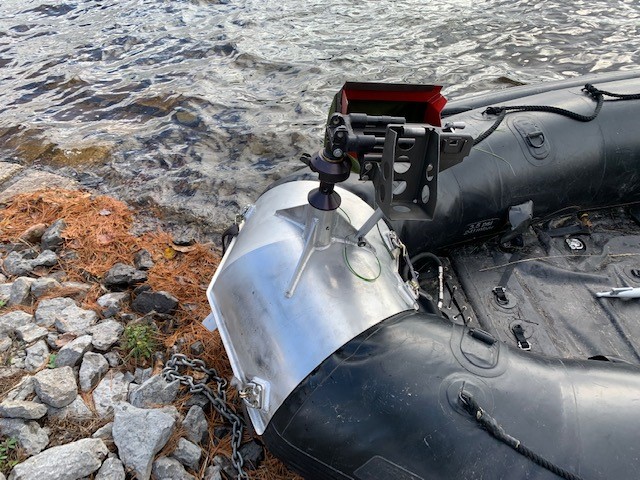by Ken Pole
Even when fully inflated to maintain shape – and perhaps especially so because of inherent vibrations – inflatable boats are not an ideal mount for infantry tasked with getting onto a beach quickly while maintaining suppressing fire at up to 1,100 rounds per minute with the Colt Canada C-6 general purpose machine gun (CPMG).
It’s not the fault of the weapon or the operator, even at lower rates of fire and in flat water. Add wave action to the mix and fundamental physics of the CPMG’s recoil on a flexible platform and you have a challenge the Army has literally been wrestling with for some time.
The gunner usually makes do with a pile of rucksacks at the bow, settling into position with the left hand crossing the body to the top of the butt to snug the weapon into position for firing with the right hand. “Even then, it’s very bouncy and hard to keep control,” agreed Master Warrant Officer Daniel Roberge of the Directorate of Land Requirements (DLR).
The need for a solution was originally identified by 2 Combat Engineer Regiment at Canadian Forces Base Petawawa, Ontario. National Defence allowed that firing from a pile of rucksacks or even nothing, “did not make for the most stable platform to fire from” and asked DLR to come up with a solution to what has been a potentially deadly tactical deficiency.
“They have come up with a prototype that you strap to the bow of the boat to mount a C-6,” explained Roberge, a master gunner who is enthusiastic about anything that can give troops an advantage. “It just doesn’t move!
The prototype is similar in concept to the door gunner’s pintle on Royal Canadian Air Force’s CH-146 Griffon multirole utility helicopters, but the base evokes the solidity of a medieval knight’s breastplate.
And once the inflatable grinds onto a beach or riverbank, packed with troops and the gear, the C-6 is quickly dismountable for use on land. “We have had good feedback,” Roberge said.
The basic concept was field-tested and effectively validated last fall, albeit with some fine-tuning of how it is strapped down to connectors glued to the inflatable. More refinement is planned before the design is approved for production, either in-house or through bids from the private sector. “Keeping it inside would put additional demands on our internal resources,” he pointed out.
At present, it’s an Army solution to an Army problem, but if allies see the mount on exercises or as a product promoted by industry, it could find a much wider group of users.




